A six-and-a-half tonne defunct climate satellite that has been circling the Earth for the past 20 years will make a fiery death plunge this week, NASA officials have warned.
According to NASA's latest projections, the bus-size Upper Atmosphere Research Satellite will likely plummet down to Earth sometime around September 23. But there is a one-in-3,200 chance that its debris could hit any person, US space agency officials said.
...
Exactly where will the debris fall?
Image: Recent Orbital History of UARS"Re-entry is expected on September 23, plus or minus a day," they said.
At least 26 large pieces of the dead satellite will hit the ground on Earth, surviving the scorching temperatures of atmospheric re-entry, LiveScience reported.
Though it's still uncertain exactly where the debris will fall, NASA officials indicated that the drop zone for UARS satellite debris could be anywhere between the latitudes of northern Canada and southern South America, an area that includes much of the planet.
Satellite may crash into the sea
Image: An artist's impression of UARSThe $750-million satellite, which was launched in 1991 to study the ozone layer and the Earth's upper atmosphere to better understand their role in the planet's climate, should re-enter over a 804-km track, the experts have predicted.
Since 75 per cent of Earth is covered with ocean, there is a high likelihood that the satellite will re-enter over the sea or a remote, uninhabited stretch of land, said Victoria Samson, the Washington Office Director of the Secure World Foundation.
Satellite designed for 3-year mission
Image: Planet EarthThe UARS was designed for a three-year mission, but it lasted for 14 years until newer satellites made it obsolete.
It was decommissioned in December 2005 with NASA experts commanding the spacecraft to fire its thrusters one last time to use all its remaining fuel to place it on a years-long path toward disposal in Earth's atmosphere.
Sky watchers may see a 'dazzling light show'
Image: The Upper Atmosphere Research SatelliteIf the satellite does fall while flying over a populated region of Earth, sky watchers could see a "dazzling light show if they have clear weather", said Nick Johnson, chief scientist of NASA's Orbital Debris Programme in Houston.
As of Sunday, the UARS was flying in an orbit that reached a high point of about 149 miles (240 km) above Earth. That is down from an orbit that peaked at an altitude of 171 miles (275 km) on September 8.
Satellite falling faster than expected
Image: A bright pass of UARS photographed from the NetherlandsThe huge satellite, which is 35 feet long and 15 feet wide, and has been falling faster than anticipated (initial re-entry estimates pegged its plunge to somewhere between late September and early October) due to increased solar activity last week.
Solar activity can cause the Earth's atmosphere to heat and expand, increasing drag on low-flying spacecraft, the researchers said.
NASA keeping an eye on falling satellite
Image: The Upper Atmosphere Research SatelliteThe US Strategic Command at Vandenberg Air Force Base, California, and NASA are keeping a close eye on the falling UARS spacecraft.
They have said that they will only be able to pinpoint the satellite's point of impact to within about 6,000 miles (10,000 km) nearly two hours before re-entry due to its unpredictable nature, the experts said.

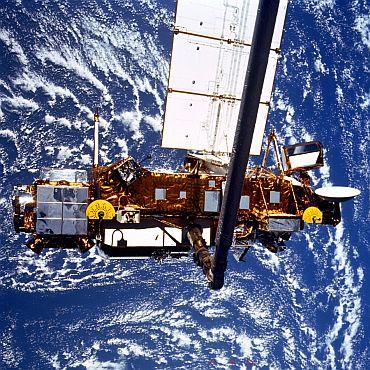
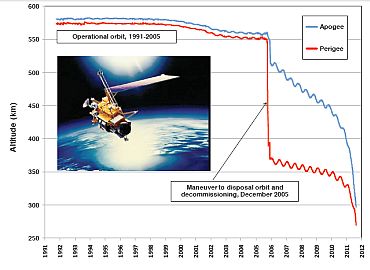
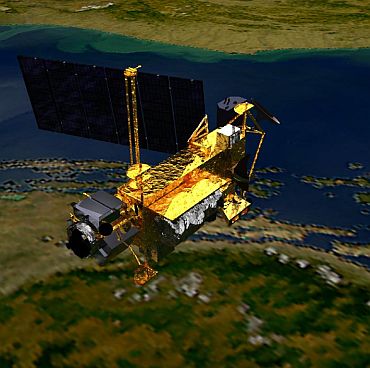

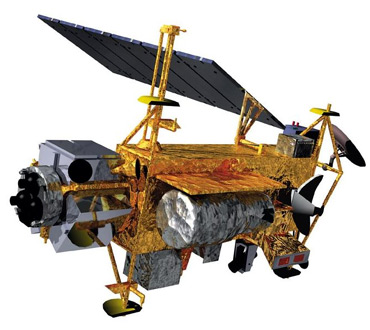
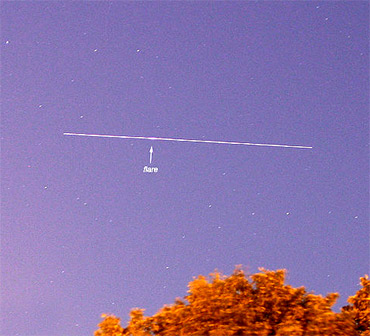
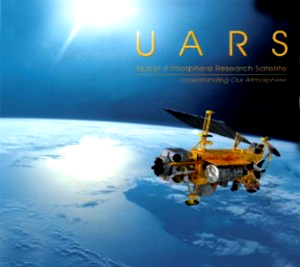
article